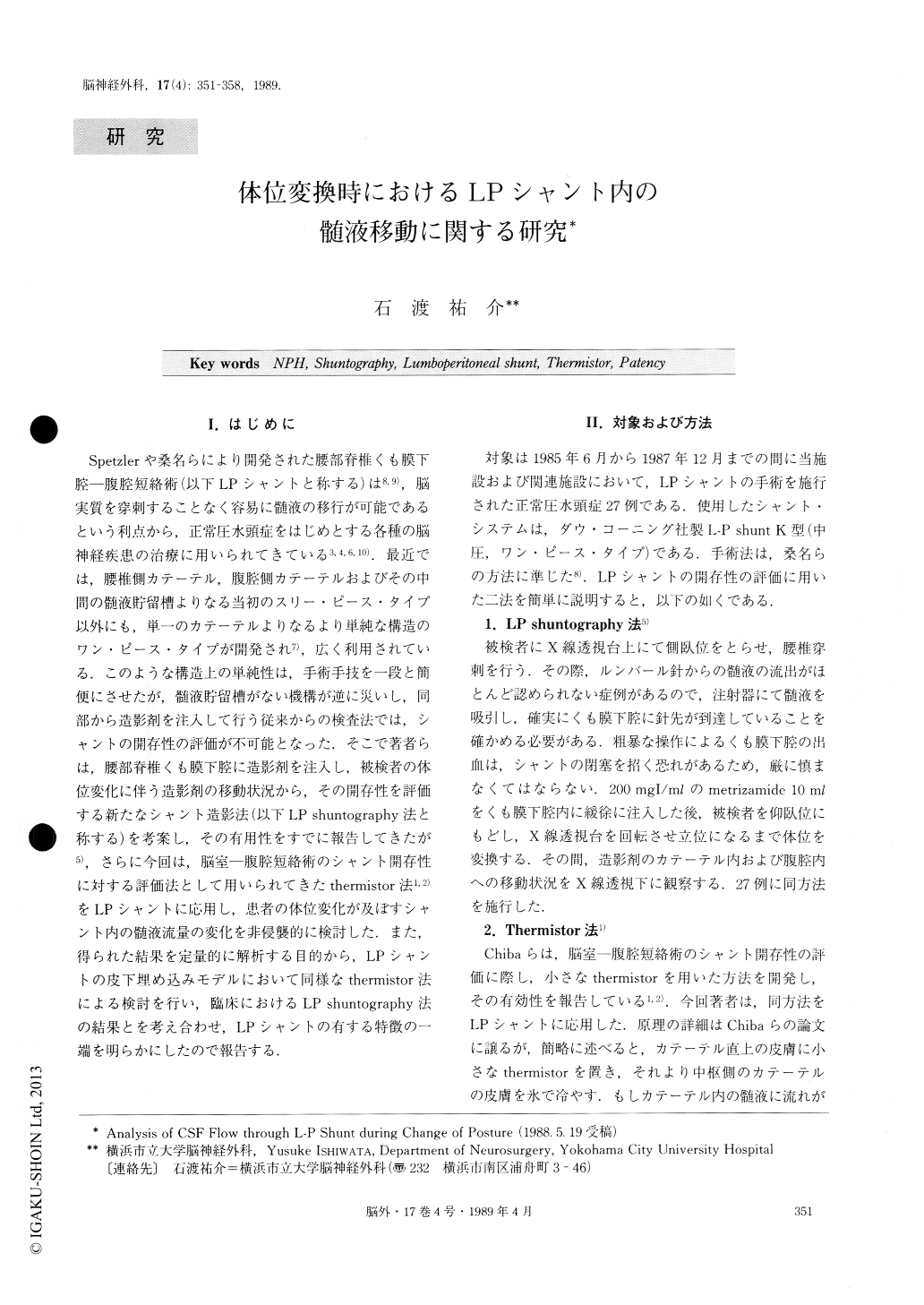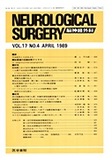Japanese
English
- 有料閲覧
- Abstract 文献概要
- 1ページ目 Look Inside
I.はじめに
Spetzlerや桑名らにより開発された腰部脊椎くも膜下腔—腹腔短絡術(以下LPシャントと称する)は8,9),脳実質を穿刺することなく容易に髄液の移行が可能であるという利点から,正常圧水頭症をはじめとする各種の脳神経疾患の治療に用いられてきている3,4,6,10).最近では,腰椎側カテーテル,腹腔側カテーテルおよびその中間の髄液貯留槽よりなる当初のスリー・ピース・タイプ以外にも,単一のカテーテルよりなるより単純な構造のワン・ピース・タイプが開発され7),広く利用されている.このような構造上の単純性は,手術手技を一段と簡便にさせたが,髄液貯留槽がない機構が逆に災いし,同部から造影剤を注入して行う従来からの検査法では,シャントの開存性の評価が不可能となった.そこで著者らは,腰部脊椎くも膜下腔に造影剤を注入し,被検者の体位変化に伴う造影剤の移動状況から,その開存性を評価する新たなシャント造影法(以下LP shuntography法と称する)を考案し,その有用性をすでに報告してきたが5),さらに今回は,脳室—腹腔短絡術のシャント開存性に対する評価法として用いられてきたthermistor法1,2)をLPシャントに応用し,患者の体位変化が及ぼすシャント内の髄液流量の変化を非侵襲的に検討した.
Two methods for percutaneous study of lumboperi-toneal shunt patency are described. The first is an LP shuntography in which patency of the shunt can be assessed by the intraperitoneal spread of contrast medium injected intrathecally via the lumbar route. This method was performed in 27 hydrocephalic pa-tients. The other is a thermosensitive determination technique, in which patency of the shunt can be asses-sed by definite temperature changes. In a patient with an LP shunt, flow of CSF, and hence patency of the shunt, are indicated by a downward deflection of the recording trace.

Copyright © 1989, Igaku-Shoin Ltd. All rights reserved.


